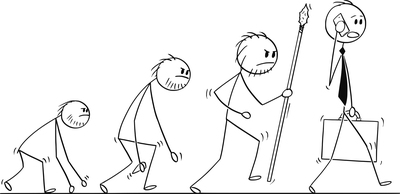
Four Urgent Keys to Transforming Internal Audit
March 12, 2018
For Internal Audit, the War for Talent Is Pivotal
March 26, 2018The issue of the rotational chief audit executive (CAE) model is one I’ve addressed in the past. In fact, the second blog post I ever wrote — more than nine years ago — was on this topic. My view is pretty clear that the practice, while widespread, has some inherent pitfalls. If not handled well, it can lead to problems, including real and perceived objectivity impairments for not only the CAE but the entire internal audit department.
My apprehension about this practice has grown proportionally to growth in the demands that stakeholders are placing on the profession. Internal audit is at the cusp of transformational change as technology and an expanding scope of work require that it become more agile and innovative. Short-term leadership created by the rotational CAE model will make such a metamorphosis significantly more difficult, if not impossible.
At The IIA’s recent General Audit Management (GAM) conference in Las Vegas, the transformation imperative was front and center in presentations and discussions. In one such discussion, a longtime colleague, for whom I have much respect, was openly skeptical that individuals brought in as a CAE for a three-year assignment would have the appetite to drive transformational change. According to his reasoning, these individuals are often “checking the box” by serving as the CAE. Just passing through, they would not have the patience or interest in transforming an internal audit function. He concluded that they are more likely to see themselves as “free agents” than “agents of change.”
I thought that his assessment was a bit harsh. After all, I have known many rotational CAEs who absolutely were change agents. But I had to acknowledge that I have also known some who were reluctant to rock the boat, out of fear that it might not safely deliver them to the shore where their post internal audit assignment awaited. Over the past week, I have come to believe that concerns about rotational CAEs are worth some reflection.
The recently released 2018 North American Pulse of Internal Audit makes a compelling case that our profession will need to transform to keep pace with demands and disruptions born from a changing risk landscape and technological advances that show no signs of slowing. Pulse identifies agility, innovation, talent, and engagement with the board as four areas of focus. If we examine how rotational CAEs might address each of the four areas, we can quickly see how the practice could undermine those efforts.
Agility requires a change in mindset, and a change at the top can sometimes be just what is needed to alter attitudes and outlooks. However, most rotational CAE programs are designed as training grounds for the company’s promising executive talent. In other words, those rotating into the CAE role are there to hone their executive presence, gain face time with the board, and enhance their knowledge about the organization through internal audit’s holistic and analytical perspective. They are not there to change the mindset of the internal audit function.
Even the most talented rotational CAE will have to overcome a steep learning curve simply to get up to speed on what internal audit does and how it adds value to the organization. To then expect these ambitious executives to become transformational leaders over a three- to five-year rotation seems dubious, at best.
Innovation is currently a popular buzzword in the business lexicon, but it carries significant risk. Often driven by business disruption, attempts to innovate can and do lead to failures. These fits and starts are part-and-parcel to innovation and should be expected. But is it reasonable to expect rotational CAEs to risk failure during their limited tenure? It seems more likely that many rotational CAEs are more willing to bide their time and learn than to risk failure while attempting to innovate.
Building an agile and innovative internal audit function requires identifying and retaining the right team. This is another significant challenge made more difficult by a rotational CAE model. Even the most seasoned CAEs report difficulty in finding the right talent. The Pulse survey found that nearly three in four respondents report that they have gaps to fill regarding adequate, competent, and objective staff to carry out the audit plan.
The Pulse survey also showed that nearly all CAEs find it difficult to recruit top talent with expertise in cybersecurity and privacy, as well as data mining and analytics. In my mind, the prospect of rotating leadership makes an internal audit function less attractive to such top talent.
Finally, building transparent and trusting relationships with the audit committee takes time. Once achieved, such long-term relationships can be leveraged to strengthen engagement. As Pulse points out:
“Cultivating excellent relationships with audit committee members so they fully understand internal audit’s views on risk and control, resources, and performance should help ensure the audit committee will not just ‘stand behind’ internal audit when there is a dispute with management, but instead will ‘stand with’ them.”
CAEs whose tenure is limited by design will have a harder time building those relationships, and audit committee members likely will be more reluctant to place their trust in someone who may be gone in a year or two.
The common thread throughout this post questions whether the rotational CAE can realistically lead innovation and change. I believe any critical analysis would conclude that the model certainly would make innovation and change more difficult.
Any newly appointed CAE can be a catalyst for change. However, internal audit’s reputation and independence can be seriously threatened if the CAE is not intimately familiar with the profession and steeped in the Core Principles, ethics, and Standards upon which it is built.
I would certainly be remiss if I didn’t acknowledge the obvious: A career CAE who has served years or decades in his or her internal audit department will also face inherent struggles to be change agents. It is the complacency that many of these individuals have come to symbolize that concerns me the most for our profession. So, while the transient CAE may struggle to drive transformation, so too may the tenured CAE.
Our profession finds itself at a crucial juncture in its history, and it will need innovative and courageous leaders who can act as true agents of change. It is possible that new talent rotating into the role can accomplish this, if they take their task seriously and are willing to put in the time and effort to envision internal audit’s potential and get it right.
What it does not need are free agents who view a leadership role in internal audit as simply a way station in route to the C-suite.
As always, I look forward to your comments.




I welcome your comments via LinkedIn or Twitter (@rfchambers).